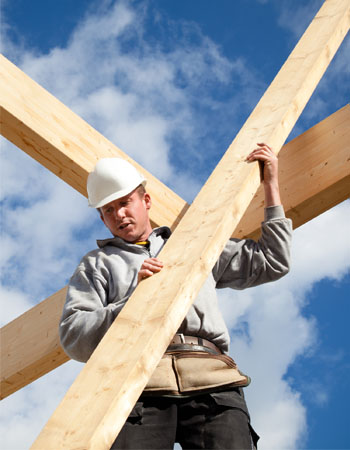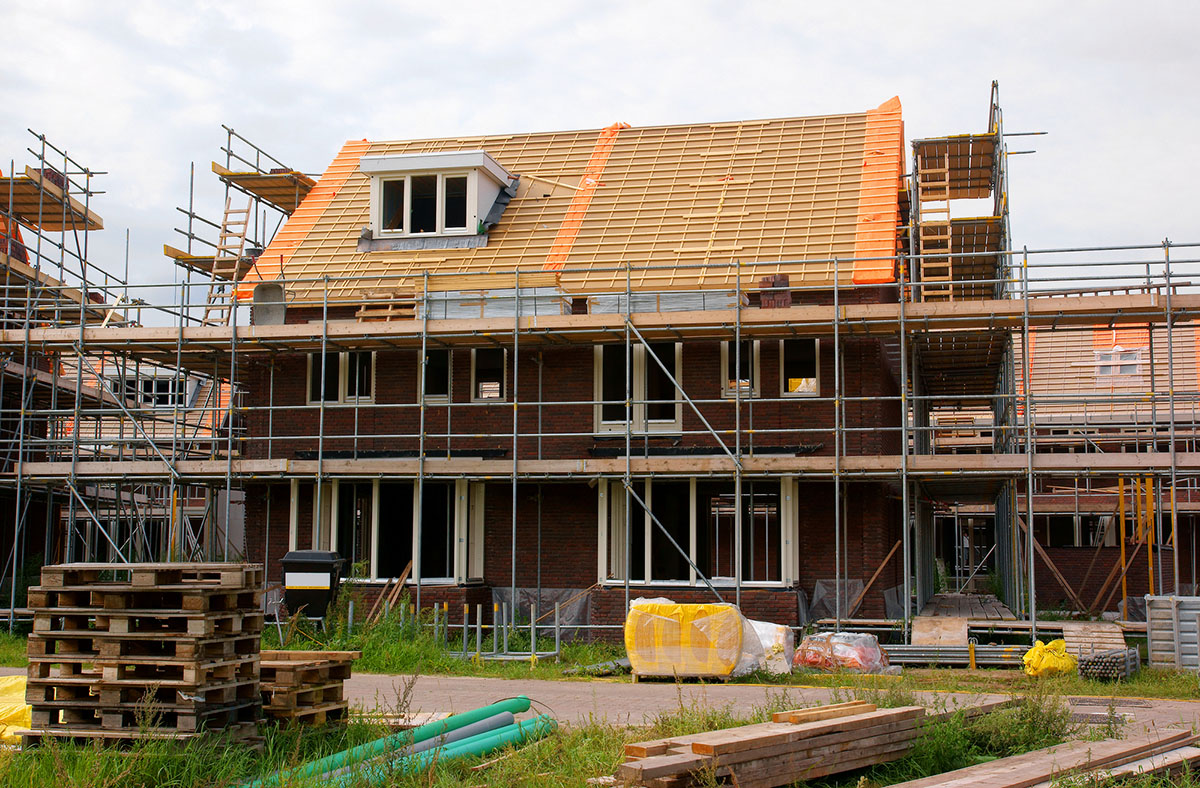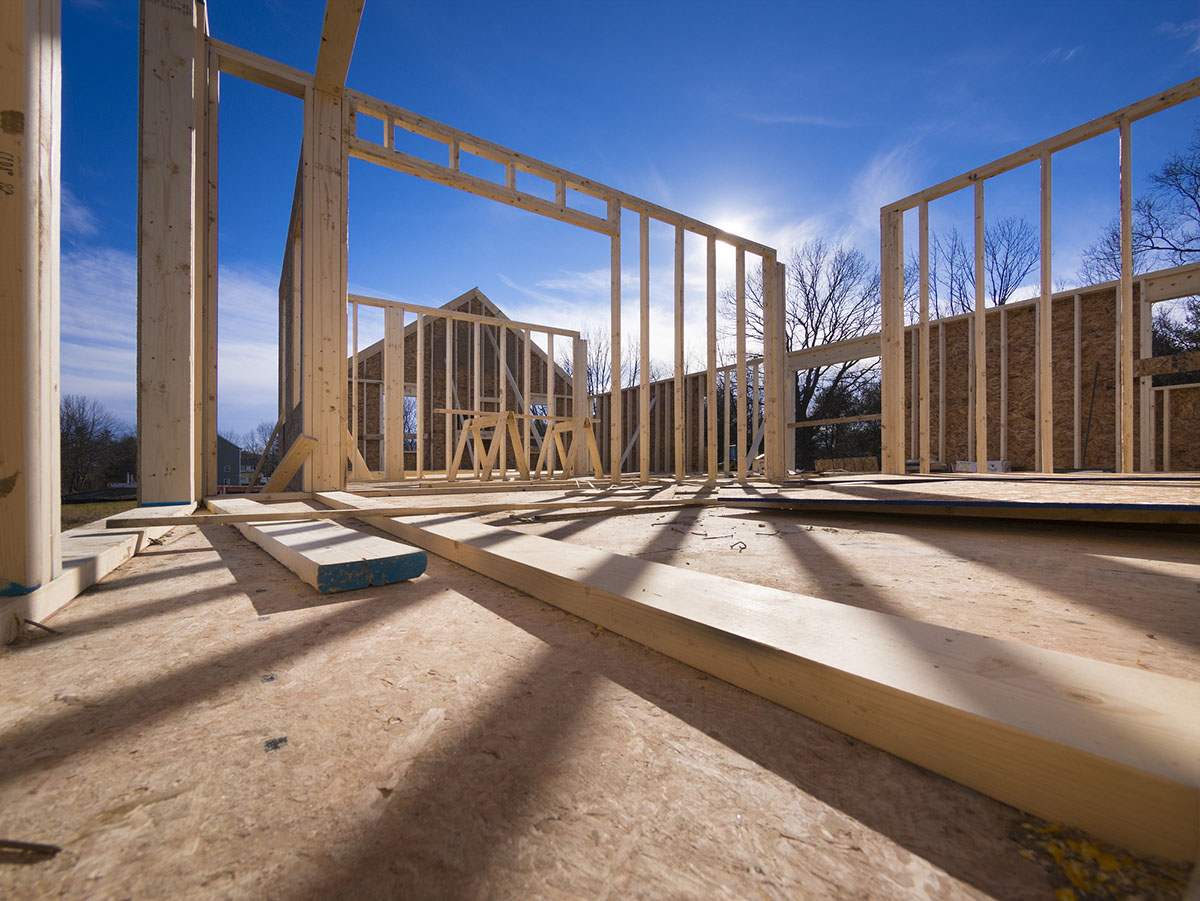How Much Does It Cost to Build a House?
Hello, my friend, hello again; today we come together to talk about How Much Does It Cost to Build a House? and hope the blog can help you.
Imagine the possibilities—every detail just exactly the way you want it to be without having to settle for what’s already on the market. The opportunity to build your own house is exciting, but it can be a big investment, ranging from $158,572 to $478,600 and averaging out nationally at $100 to $200 per square foot.
- Typical Range: $158,572 to $478,600
- National Average: $303,373
Shopping for a new home based on existing inventory can be hit or miss: One house might have many features a buyer loves but be in the wrong neighborhood, while a home in the neighborhood the buyer loves may be more ramshackle than expected. House prices vary wildly based on which part of the country the market is in, which part of the state, and sometimes even the side of the street a home is on. Building your own house allows you to customize every detail and control the budget, as long as you’ve budgeted for the occasional unexpected surprise. In addition, building your house lets you deeply understand the inner workings of the place in which you spend most of your life.
This means, of course, that there are many components to learn about when pricing a potential build. We’ve broken down the different elements that go into building a house to help you understand how to afford a newly constructed home that best suits your style and budget.
Builders, Architects, and Contractors—All In One Place
Building a new home is hard. Get free, no-commitment project estimates from experts near you.
How to Calculate How Much It Costs to Build a House

There are many variables when estimating the cost to build a house. Each category of construction and finish will be available in a range from economy to luxury, so the actual cost and budget for each category is dependent on the builder’s preferences.
While you can choose to serve as your own contractor, new construction building is a minefield of permits and ordinances and a grand dance of coordination. Unless you’re planning for this to be your full-time job for the length of the build, the next step is to consider interviewing several general contractors and hiring one to shepherd your project through from start to finish. Although you might be committed to building the house yourself, a good contractor should be able to show you how they can save you money and alert you to potential pitfalls. Hiring a general contractor will account for 10 percent to 20 percent of your total project cost, but it may save you from committing expensive errors. Once you’ve established that, the contractor should be able to help you with specific estimates.
To calculate how much it costs to build a house, start by choosing and adding up the following:
- To calculate the cost, you’ll need to know the size and footprint of the house. If you’re working with an architect, plan as much as possible before seeking estimates for materials and services. Last-minute adjustments can add significantly to the price. Calculate the square footage of the house and the dimensions of the footprint—for reference, the average cost to build a new home is $150 per square foot, but in high-end markets that number can soar, so seek multiple estimates as you choose your materials.
- Get estimates for how much it will cost to clear the property and prepare the site, including tree removal, excavation and grading, soil testing, and connection to city utilities.
- If your house will need a foundation, get several estimates for the excavation, soil removal, and material and labor costs to pour the foundation.
- Using the square footage and diagrams of the room division plans, a contractor will be able to help you estimate the cost of framing materials and labor.
- Decide on the type of exterior cladding (which includes insulation and choice of siding) you prefer, then get estimates or bids to compare. This is an area where you can save significantly on the material cost based on your preferences and choices, because there is a wide range of pricing from economical vinyl siding to mid-range wood siding, up to luxury custom finishes including natural stone and stucco. In addition, there is often space for negotiation on this cost based on the vendor and the amount of material you’ll need. Choose windows based on your design, and price out options.
- Consider the major systems of the home, including electrical, gas, HVAC, plumbing, and technology wiring. You’ll need to add the total cost of materials, including the foundation pieces such as the breaker box, meters, boilers or furnaces, and condensers, along with connection components such as wires, junction boxes and switches, pipes and connectors, and outlets. Labor costs to set and install these systems can be significant and variable, based on the systems you choose and regional variations of labor costs, so seek multiple estimates and ensure whether or not the estimates provide a flat project cost including materials itemize individual material costs and labor separately.
- Interior finishes, such as drywall, flooring, cabinets, and ceilings, will vary in material and labor costs based on what you choose and the size and dimensions of the surfaces you have to cover. Estimates will help you calculate this sum.
- Permits: New construction requires permits and inspections at almost every turn, and missing one can complicate the process later. Visit your local town assessor, survey offices, or town’s municipal offices to ask for a list of necessary permits and their list of costs.
- Other professional costs: A general contractor will add 10 percent to 20 percent to your cost. Architects, engineers, drafters, and designers are likely to charge an hourly rate that can be negotiable depending on the level of services. Interview and seek proposals from contractors before hiring them, then add the price to your total cost.

Factors in Calculating How Much It Costs to Build a House
Once the basic systems and structures that need to be in place during a build are understood, home builders can begin to make decisions that allow them to prioritize those aspects of the house that are important to them and fit them into the budget. Remember that the national averages are just that—averages—and that everyone has different ideas about how to build a house. For some builders, the size of the house is the most important part, while others emphasize the number of bedrooms or bathrooms, and others look to maximize outdoor living spaces. The total cost will be based on these priorities and the local market.
Don't Do The Heavy Lifting Yourself
Hire contractors, architects, builders, and more. Get free, no-commitment project estimates from experts near you.
Size and Shape
It stands to reason that the bigger a house will be, the more it will cost. This isn’t a straightforward calculation, though. Sometimes adding a second story to a smaller footprint can be less expensive than spreading that square footage out into a larger one-story home, because the two-story house will save on land preparation, foundation, and roofing costs. The shape will also have a significant effect on the total cost: Every additional corner or odd angle on the exterior requires more framing, flashing, and finishing material and adds labor time and cost. A round library room on the corner of the house may be your dream, but the cost of framing and finishing that rounded room may mean you’ll have to sacrifice elsewhere, depending on your budget.
Design Features
Does your lifestyle include outdoor living? Will you need an outdoor kitchen, pool, patio, or deck? These features will obviously add to the design, material, and labor costs, but they also may be less expensive to include in the original build than to add on later. When labor and material are budgeted into the cost of a large project, the goods and services may be discounted. If these features aren’t at the top of your list, this is an area where you can cut back so you can spend the money on other elements that are more important to your lifestyle.
Number of Stories
Adding multiple stories to a home can add costs to design and construction work, but it can also be less expensive than adding the same square footage to a one-story design. Multistory houses require different levels of support framing on the basement and first-story levels to support the second or third levels, but larger single-story homes require larger foundations and more roofing. For many new-home builders, this choice is nonnegotiable, as the home they’ve envisioned has a particular style. For others, the cost is more important than how the square footage is distributed, and the less expensive option will win out.
Basement
Basements can add $10 to $100 per square foot to new house construction, depending on whether they are partial or full depth and whether they are finished or unfinished. It’s important to check with local regulations about basements, as many municipalities have codes that specify the depth of a basement and the number and type of egress points required. These considerations are important, because adding egress points to a completed basement can be an unexpected and significant cost.
Geographic Location
Some areas are simply more expensive to build in than others. Whether it’s the cost to transport materials, availability of skilled labor, or just the market value of those services, the city and state in which you plan to build will have an effect on the entire cost of the project. In addition, when building on a site that is very remote or difficult to access, expect to pay more for transportation and labor to cover travel time and potentially to stretch utilities to the new home.
Material Costs
All told, the materials to build a house will make up approximately 50 percent of the total cost. This means, however, that the builder’s selections have the power to influence that overall cost. For example, vinyl siding costs about $2 per square foot, while custom stone can ring up at more than $30 per square foot. It’s possible to make economical selections on materials without sacrificing safety or appearance to save money or spend it on other priorities. Lumber, concrete, drywall, flooring, siding, and roofing are all materials that come to mind, but don’t forget insulation, endless lengths of wires and pipes, and nails, staples, and other hardware.
Labor
The cost to hire workers to design, build, roof, power, plumb, finish, and decorate a house (and to clean up the debris after it’s built) is not insignificant. A full 30 percent to 60 percent of the budget will go to subcontractors and experts in their fields, but this amount will be tied, as everything else is, to the size and design of the house and the chosen materials. The labor to put down a simple hardwood floor, for example, will be less than the labor to lay an intricate mosaic tile floor in a custom design. Some finish functions can be performed by capable homeowners to save on labor costs, but others, particularly whole-house systems and framing, should be handled by professionals.

Additional Costs and Considerations
A house is much more than its visible parts—beyond the basic construction of the house, there are other costs that need to be accounted for when building a budget.
Your Home, Exactly How You Want It
Let pros get it done for you. Get free, no-commitment project estimates from experts near you.
Land and Site Work
Building a house requires a clean, level site on which to pour a foundation. Site work can involve tree and landscaping removal, grading, and surveying the property, in addition to locating or placing utility supply lines. This can range anywhere from $5,000 to $38,000 and should be roughly 5 percent to 8 percent of the total build cost.
Lot Condition
Are utilities already in place on the land where the house will be built? If so, you’re in luck and will only have to identify their locations. Connecting to city sewers and water lines can add $1,300 to $5,000 each to the cost of the build, and connecting to electrical lines adds anywhere from $1,000 to $30,000, depending on how close the lot is to existing lines.
Foundation
The average range for a foundation is $16,600 to $72,000, or 10 percent to 15 percent of the total project cost. This will vary based on the depth and size of the foundation; a slab foundation will cost less than a dimensional one. Local regulations often determine the type and size of the foundation based on soil type, weather typical for the region, and floodplain status.
Framing
Depending on the square footage, shape of the house, number of rooms, and number of stories, the framing will make up 10 percent to 20 percent of the project cost, averaging $16,600 to $95,000. This is an area where working closely with an architect or contractor can help save money; they will know which choices will increase or decrease the overall cost and can help guide your choices. It’s also an area where it’s important for you to think carefully about your preferences, because it won’t matter that you saved a bit on framing if the room layout feels awkward or too open or closed off for your living style.
Stilts
If you’re building in a floodplain or coastal location, stilts may be a necessary part of the planning process. Your homeowners insurance may require stilts in a floodplain, so it’s a good idea to check before finalizing your design—building on stilts adds $20,000 to $60,000 to an initial build, but adding them later costs $25,000 to $100,000 and can lead to damage to other finish work, so if there’s any possibility you’ll need them later, it’s better to include them in the new construction plan.
Exterior Work
Another 15 percent to 20 percent of the cost will consist of the cladding (including insulation and choice of siding), roofing, gutters, and windows. Expect to pay $20,000 to $95,000 on average. If you’ve dreamed of a shingle-style home or a beautiful fieldstone chimney, these can be places to splurge, but there are also many choices that are economical and attractive. Quality materials and professional installation are key in this area: Poorly installed gutters can cause disastrous damage, and the exterior work has a significant impact on the home’s curb appeal and resale value.
Major Systems
HVAC, plumbing, electricity, smart home wiring, and lighting: These are the systems that let your house work and breathe. Elaborate setups aren’t necessary, but there’s a wide range of costs associated with putting these systems in place, and it’s an area where it’s good to keep the long game in mind during the decision-making process. Choosing a smaller-size water heater can earn you savings now, but if your family gets larger, you may be replacing it prematurely. These choices will also affect home value, especially in areas with particularly hot or cold weather. The major systems should be approximately 10 percent to 15 percent of the budget, or between $17,000 and $72,000 on average.
Interior Finishes
While individually easy to economize, interior finishing materials add up to a whopping 25 percent to 35 percent of the home building budget cost. Drywall, ceilings, floors, fixtures, cabinets, molding, and other finishes can cost as much as $167,000 and up, depending on the materials and finishes you select. Again, there are areas where you can economize; this is definitely an area to price shop. While you may feel that an interior designer is an unnecessary extravagance, the selections and purchase of interior finishes can be easier and less costly if you work with someone who has the experience to know how to make less expensive finishes look luxurious.

How Much Does It Cost to Build a House? Types of Materials
Home-building materials have come a long way from the three little pigs’ straw, wood, and brick…at least structurally. Improvements in durability, rot resistance, and insulation have resulted in a wide range of energy-efficient options. Costs will vary based on the size of the home and the market, but each material offers benefits and drawbacks based on the location and style of the house.
Build A House That's A Home
Trusted experts at your fingertips. Get free, no-commitment project estimates from pros near you.